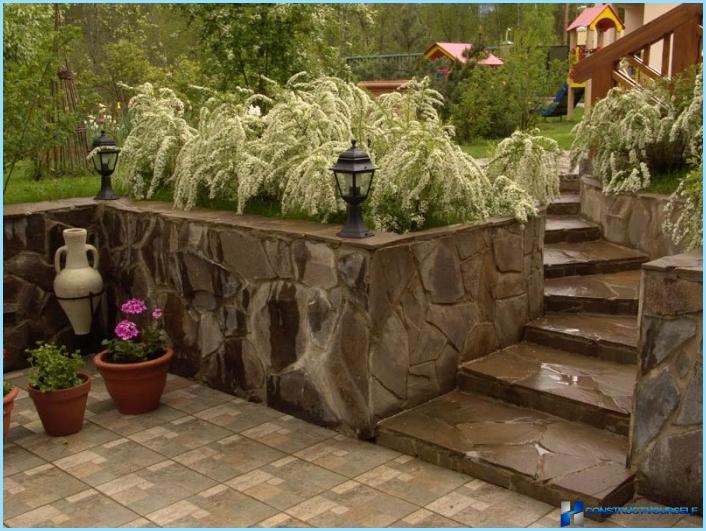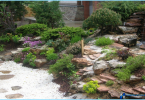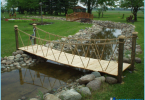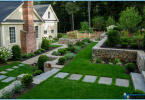The contents
What if the plot that you got, does not have the smooth terrain? First and foremost, do not need to give up. Modern techniques of creating a landscape design can turn this disadvantage into an advantage through the use of retaining walls.
The use of retaining walls is justified in areas that are on slopes. This technique is a landscape design allows for maximum benefit use every inch of land.
Because of your actions, a steep slope will soon turn into a area of landscaped terraces that will not only fulfil a purely aesthetic function, but will allow you to break your garden or even garden.
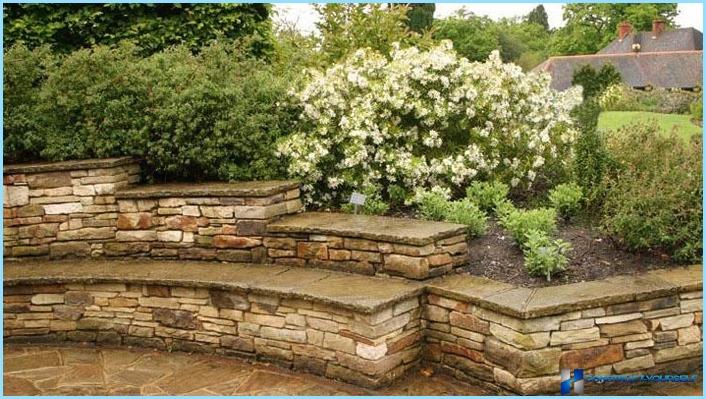
In appearance, the terraces resemble steps, each of which has a small garden. For the support of this design meet the retaining wall. Their use can create a favourable landscape for plants.
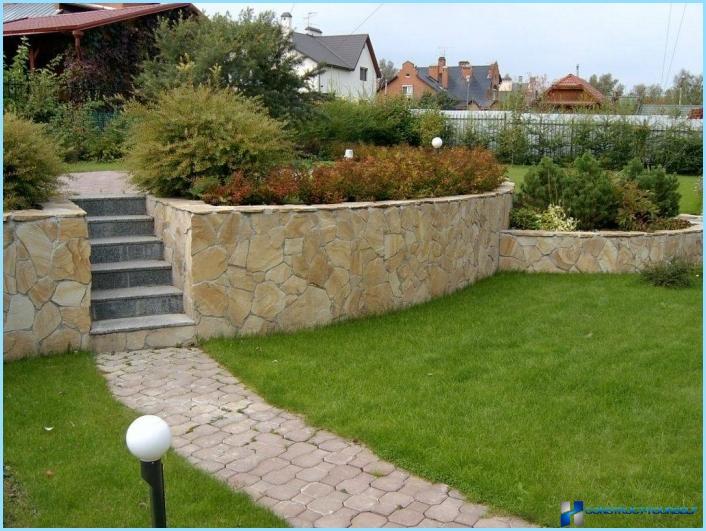
What are retaining walls ↑
Design ↑
Before you can create a zone of terraces, we need to understand what are the retaining walls in landscape design. To begin, consider the design. It consists of the following elements:
- The Foundation is the most important part of the wall, from which depends largely on the stability of the entire structure. She usually hides underground, so to the naked eye it cannot be seen. The objective of the Foundation to take the entire load of soil.
- The body or main part — the masonry, logs or concrete structure. It is the visible part of the retaining wall.
- Drainage or the drainage. This element allows to protect the wall from destructive effects of rain.
For further strengthening of the structure is rubble. It allows you to securely fix the wall in the ground, providing a longer lifetime.
How to calculate the configuration of the retaining walls ↑
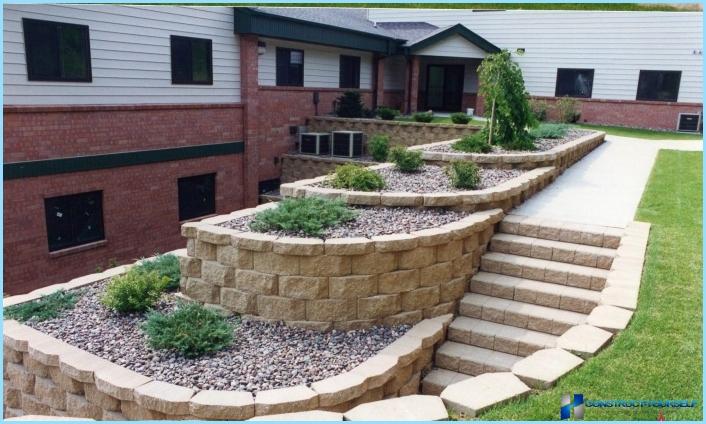
Before the use of retaining walls in the landscape of your site, it will be possible must make a calculation based on the maximum number of influence factors.
In the design and further use of retaining walls in landscape, you should consider how much resistance should have a design to resist the impact of soil.
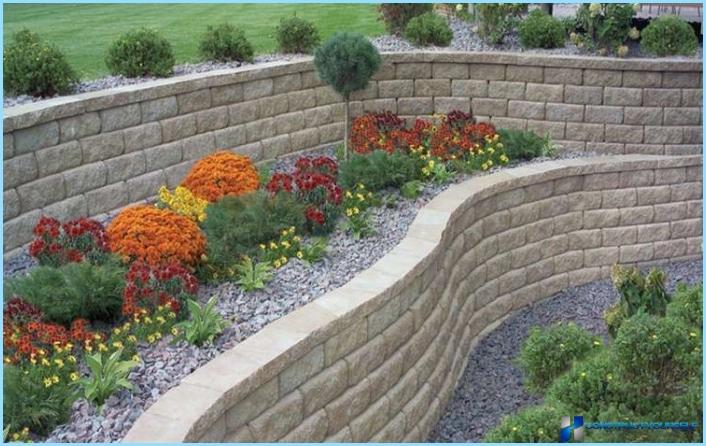
If the calculation is wrong then built your wall at best bend and at worst is collapsing. The standard height of the building this class is from 0.3 to half a meter.
Just need to make one important clarification — the independent calculation of retaining walls in the landscape is allowed only in those cases when the height does not exceed half a meter. In all other cases, without the assistance of a qualified engineer do not work.
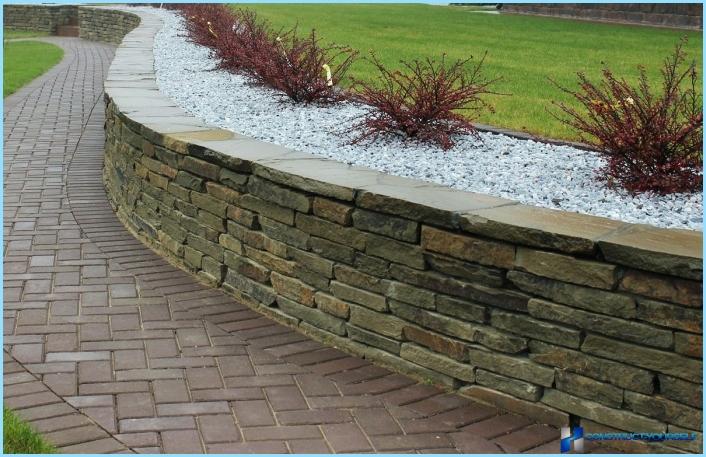
The size of the sole is calculated by a factor of 0.6, which is multiplied by the wall height. To calculate the ratio of thickness and height is to use the density of the soil:
- The soil has a high density — the ratio of thickness to height is 1:4. These types of soil classifies quartz, limestone and feldspar.
- A soil of average density — a ratio of 1 to 3. Most often, these parameters are used in the construction of facilities on the slate or Sandstone.
- Soft soil thickness of not less than 50 percent of the length. The fact that sandy loam soils have an increased risk of collapse. Therefore, to lock them in place requires the use of retaining walls of considerable thickness. Otherwise, the construction with high probability will fall.
In the case when you have to use a retaining wall in the landscape, with the problem of surveying — it is better to consult a specialist. Only a qualified engineer can carry out the necessary calculations taking into account all the variables.
Choose the design of retaining walls ↑
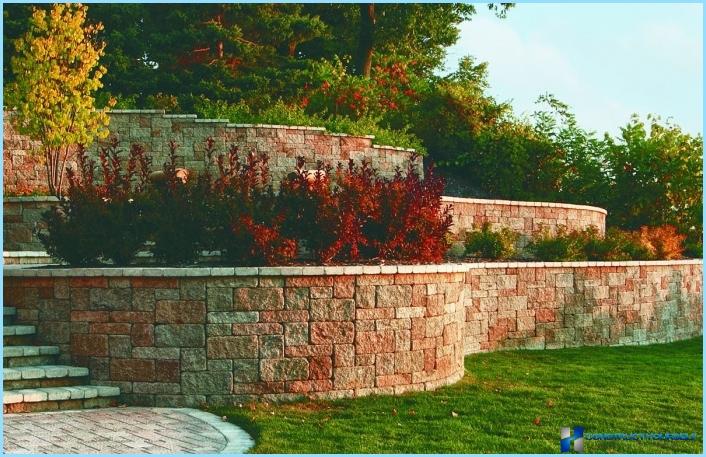
Of course, the use of retaining walls in the landscape allows you to make the problem area a great place for gardening or garden. But the special importance and aesthetic design.
So the first thing you should learn about building a retaining wall at his dacha is its use in the landscape. Because it can be both decorative and functional.
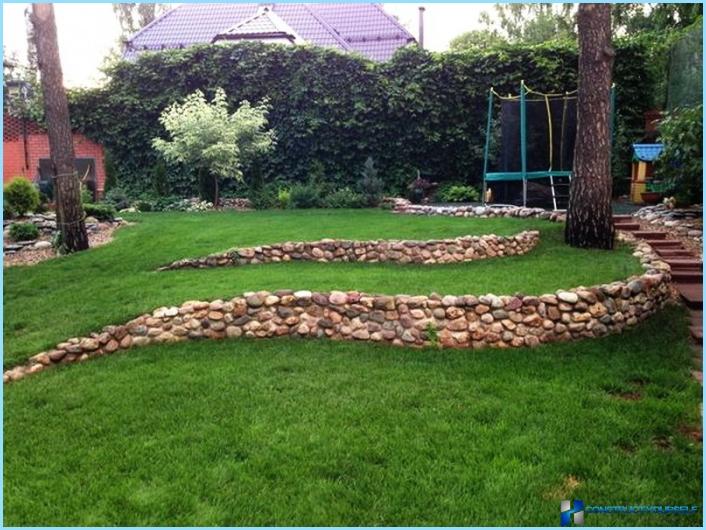
Decorative retaining wall differs from the capital used material and design. For its construction using gabions, wooden posts or brick. For a capital structure better suited to concrete or stone construction with high-quality drainage system.
To give the retaining wall truly decorative look, you can use several common methods. For example, to create a beautiful landscape, let the walls climbing plants. Their use will give the construction a more natural appearance.
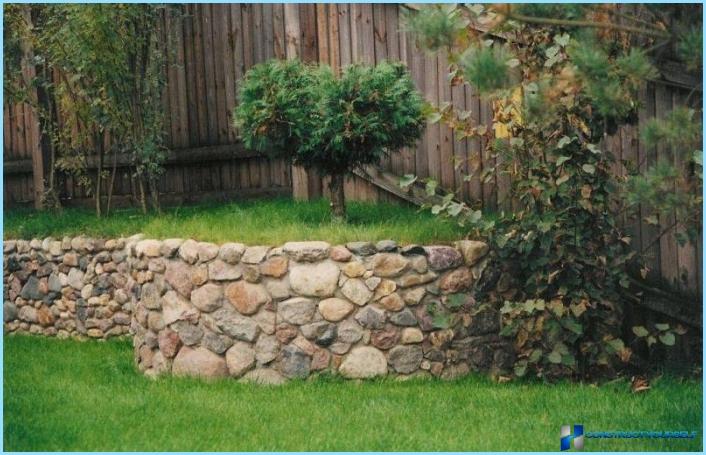
Retaining walls are ideal for use as supports for vases. Also, they can put a variety of decorative figures. It will greatly beautify the design of your country landscape.
What retaining walls can be used in the landscape of the area ↑
Wood ↑
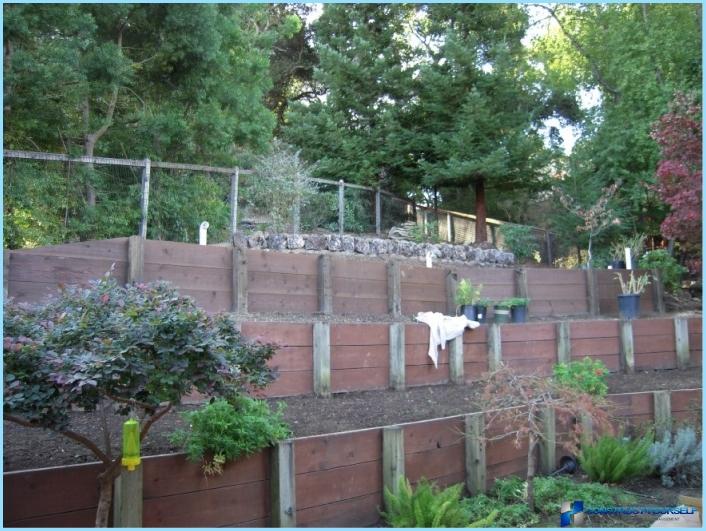
To your country the landscape looked really decorative, it is recommended that the use of wood. For the construction of such a wall you need quality logs having a flat shape.
The most common in the creation of the structures in the landscape is the use of vertically installed logs. They need to be tightly fit to each other to provide a monolithic decorative wall.
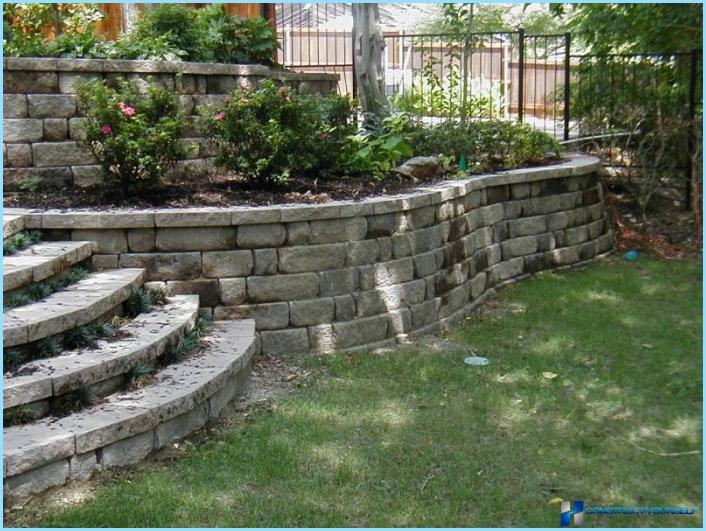
You need to take the trunks, the diameter of which ranges from 12 to 18 inches. Their use is reasonably standards in building codes. Then logs need to be buried in the ground. The height you choose yourself. But it should be noted that the immersion depth is of the order of fifty centimeters.
The use of quality logs will allow you to decorate the landscape of your site. But you should bury them not less than half a meter. Otherwise, in spring or autumn the whole structure may collapse. Also, before you dip them it will not hurt to treat with a special compound against decay and termites.
Made of concrete ↑
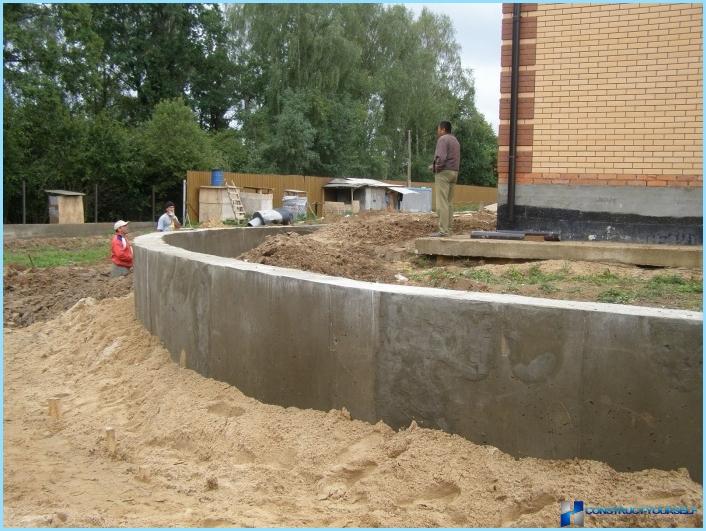
The use of such structures in the landscape is highly reliable and resistant to a variety of natural phenomena. However, there is a caveat. So the building looked presentable, it must at least brick.
To create this project for the beautification and moderation of the landscape — dig the trench. She has to repeat exactly the line of the wall. Note that the permitted use of the turns and bends.
The depth depends on the height of the wall. To build a structure height in meters, allowed the use of trench depth of 40 inches. The base is made of gravel. To achieve greater strength you will need fittings. She sealed between a wire. Only then is shuttering.
Below, the structure had a high strength you want the concrete evenly filled the previously created frame. Then the use of this wall in the landscape of your site will be as long as possible.
Of brick and stone ↑
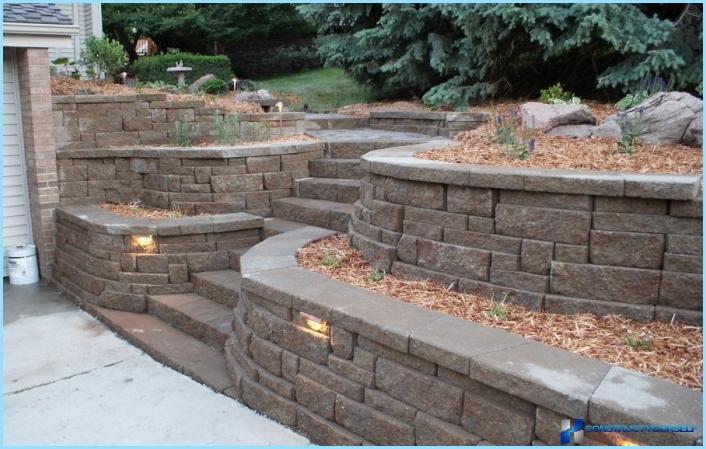
The use of brickwork to create a great element of the landscape with a decorative design. To build a structure of up to a metre is sufficient width in a half-brick, if higher, then to one. At the end of the process structure it is advisable to plastered.
The width of the stone walls may not be less than 30 centimeters. To masonry was reliable, use only good quality solution. First, put the binder stone, and on each side the rest.
The results ↑
Retaining walls allow you to create a tiered landscape that can turn even the most difficult mountain area into a flourishing garden. The data structures can be use as decorative elements.

